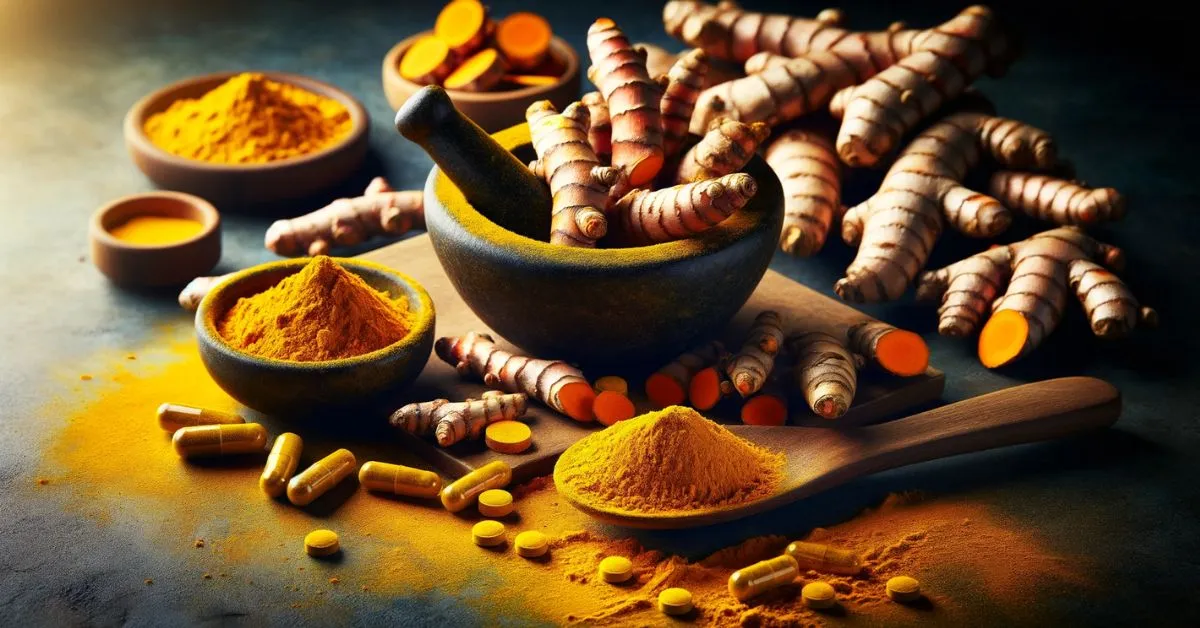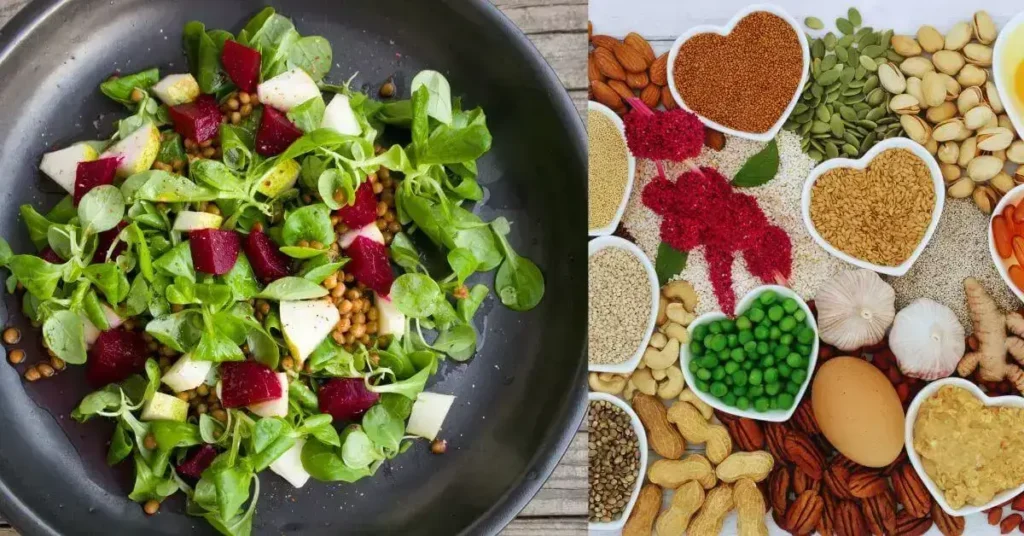Hello, food enthusiasts and health warriors! I’m Alia, and today we’re exploring the vibrant world of turmeric—a spice that not only transforms the taste of your dishes but also packs a powerful punch for your health. Turmeric in the Diet:

Turmeric, with its distinct golden hue and earthy notes, is not just a staple in the spice rack but a star in the kitchen for anyone looking to boost their dietary health. From the simple joy of a colorful turmeric-infused rice dish to the soothing warmth of golden milk at night, this spice is as versatile as it is beneficial.
Join me as we discover 11 creative ways to incorporate turmeric into your meals and drinks, bringing not only flavor but a host of health benefits to your table. Whether you’re a seasoned chef or a curious newbie in the kitchen, you’ll find that turmeric can elevate your cooking and contribute to your wellness journey in ways you might not have imagined.
Let’s dive into the golden goodness of turmeric and see how this ancient spice can enhance your modern life. Get ready to sprinkle, blend, and stir your way to health with each delicious use!
Turmeric in the Diet: Including turmeric in your meals is specific and universal. From sprinkling it on roasted vegetables, and blending it into your morning smoothie, to mixing it into your soups and stews, there are endless ways to enjoy this golden spice. Not only will it add a warm, earthy flavor to your dishes, but it’ll also give your health a boost. So, why not start experimenting with turmeric in your kitchen today and see how this ancient spice can benefit your modern life?
11 Ways To Eat Turmeric In Food And Drinks

Golden Milk Magic
Start or end your day with a cup of warmth and wellness. Golden Milk blends the earthy goodness of turmeric with the creamy richness of almond milk, enhanced by coconut oil, ginger, cinnamon, and a touch of sweetness from honey or maple syrup. It’s the perfect soothing drink to wake up to or unwind in the evening.
Also, read 6 Benefits of Turmeric for Healthy Skin: Risks of Using Turmeric for Your Skin
Breakfast with a Twist
Give your morning routine a healthful upgrade by adding turmeric to scrambled eggs or a savory frittata. A sprinkle of black pepper enhances the flavor and boosts the absorption of turmeric’s star compound, curcumin, making your breakfast not just tastier but also more beneficial.
Also, read 10 Health Benefits of Garlic: A Clove a Day Keeps the Doctor Away
Salad Dressing
Enhance your green salads with a turmeric-infused dressing. A simple recipe involves mixing turmeric powder with white miso paste, lemon juice, olive oil, and tahini.
Turmeric Bone Broth Coconut Milk
Combine the benefits of bone broth with turmeric by blending it with coconut milk, cinnamon, black pepper, raw honey, and ginger powder, then heating the mixture.
Roasted Vegetables
Elevate the flavor of roasted veggies like carrots, cauliflower, and potatoes by seasoning them with turmeric along with sea salt and black pepper.
Rice Addition
Simply stir some turmeric into your cooked rice to add color and flavor.
Green Smoothies
Start your day with a nutrient-rich green smoothie by adding a bit of turmeric for an extra health boost.
Soups
Turmeric can be a great addition to soups, enhancing flavor while providing anti-inflammatory benefits.
Fish Seasoning
Season your favorite fish with turmeric before baking, grilling, or pan-frying.
Spiced Nuts
Mix turmeric with olive oil, sea salt, and black pepper, and toss with walnuts before baking for a healthy snack.
Liquid Gold in Smoothies and Juices
Elevate your liquid nutrition by incorporating turmeric and ginger into your smoothies and juices. This golden addition brings an anti-inflammatory boost and a depth of flavor, ensuring you start your day loaded with health benefits.
Also, read Diabetic Diet: Top Strategies for Blood Sugar Control
Making Turmeric Work Better: Using Fats and Black Pepper
When you add turmeric to your food, there’s a special part of it called curcumin that’s good for your health—it fights inflammation and acts like an antioxidant. But, there’s a trick to getting the most out of it. Curcumin loves fat, so when you eat it with foods that have fat in them, your body can use it better.
Think of mixing turmeric into meals with oils, nuts, or avocados.
There’s another cool tip: adding just a little bit of black pepper can do wonders. Black pepper has something called piperine, and it’s like a magic boost for curcumin, making it up to 20 times more effective. This doesn’t just make your food tastier; it helps you get more of the good stuff from turmeric.
So, when you mix turmeric with some fat and a pinch of black pepper, you’re not only making your food more delicious but also supercharging the health benefits of turmeric in your body. It’s an easy and effective way to make sure you’re getting the best out of this amazing spice.
What’s the Best Way to Eat Turmeric?
Eating healthy foods full of nutrients is the best way to ensure you get all the vitamins and minerals your body needs. But, some nutrients, like Vitamin D, are only in a few foods, and others, like omega-3s from fish, might not be part of everyone’s diet. Also, some nutrients or ingredients aren’t easily absorbed by our bodies.
This is true for curcumin, the healthy part of turmeric. Our bodies have difficulty absorbing it when we eat it, which means not much gets into our bloodstream. That’s why some people take turmeric as a supplement since it has a stronger form of curcumin.
Adding black pepper (which has piperine or bioperine) to turmeric supplements can help our bodies absorb it better. Eating turmeric with foods that have healthy fats, like avocados or nuts, helps, too. Remember, supplements are usually much stronger than the turmeric spice you cook with.
Can You Eat Turmeric Raw?
Yes, you can! Turmeric is related to ginger so that you can use it like ginger. You can peel, chop, dice, or grate it into your food. Just be careful because turmeric can stain everything yellow, so it might leave marks on your clothes or cutting board!
FAQs: Turmeric in the Diet
Q1: How much turmeric should I include in my diet daily?
A: The recommended daily intake varies, but most studies use doses of 500–2,000 mg of turmeric per day, often in the form of an extract with a significant percentage of curcumin. It’s important to start with smaller amounts to assess tolerance and always consult with a healthcare provider.
Q2: Can turmeric be taken on an empty stomach?
A: Turmeric can be taken on an empty stomach, but some people may experience discomfort or a mild upset stomach. It’s often recommended to take it with meals, especially those that contain fat, to improve curcumin absorption.
Q3: Is fresh turmeric better than powdered?
A: Both fresh and powdered turmeric have health benefits. Fresh turmeric may offer a more potent flavor and additional moisture in recipes, while powdered turmeric is more concentrated in curcumin and easier to store and use in various dishes.
Q4: Can I consume turmeric if I have certain health conditions?
A: While turmeric is generally safe, it can interact with certain medications and conditions, such as blood thinners and gallbladder disease. It’s always best to consult with a healthcare provider if you have any health concerns.
Q5: Does cooking turmeric reduce its health benefits?
A: Cooking turmeric may alter its chemical structure slightly, but it doesn’t significantly reduce its health benefits. Heating turmeric (along with adding black pepper and fat) can help increase the bioavailability of curcumin.
Conclusion
Incorporating turmeric into your diet offers a multitude of health benefits, from enhancing antioxidant protection to reducing inflammation. Whether you choose to use it in its fresh form, as a powder, or even in supplements, there are plenty of ways to enjoy this versatile spice. Remember to pair turmeric with black pepper and a source of fat to maximize its absorption and efficacy. As always, moderation is key, and it’s important to consult with a healthcare provider, especially if you have existing health conditions or are taking medications. Turmeric is more than just a culinary spice; it’s a compound rich in health-promoting properties that can contribute significantly to maintaining a healthy lifestyle.


